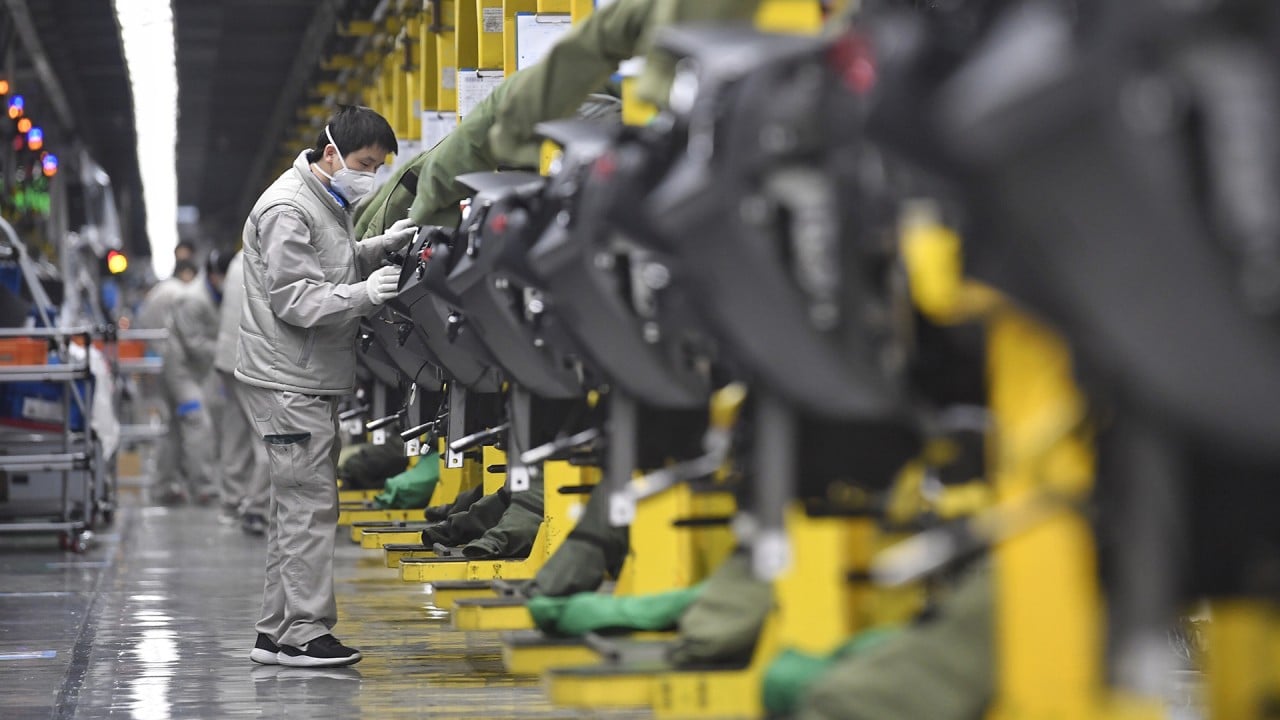
China FDI rose to record level in 2020 despite coronavirus, fastest growth rate in five years
- Foreign direct investment (FDI) into China rose 4.5 per cent from 2019 to US$144.37 billion last year
- Investment from the Netherlands and Britain increased by 47.6 per cent and 30.7 per cent, respectively, from a year earlier
Foreign direct investment (FDI) into China rose to a record high in 2020 by posing the fastest growth rate in five years despite the disruptions caused by the coronavirus pandemic.
FDI in US dollar terms – excluding financial sectors such as banking, securities and insurance sectors – grew to US$144.37 billion last year, the highest level since records began in 1983, the Ministry of Commerce said on Wednesday.
This represented an increase of 4.5 per cent from 2019 – the fourth consecutive year of growth.
FDI refers to investment in an ownership stake in a fixed-asset project, such as a business or factory, while portfolio investments are capital inflows into domestic securities, such as stocks and bonds.
In December, FDI into China rose to US$14.90 billion, 8.4 per cent higher than a year earlier and the highest growth rate since June, according to calculations by the South China Morning Post.
China in 2020 successfully responded to the severe impact of the coronavirus pandemic, completing the goal of stabilising foreign investment
In yuan terms, FDI stood at 999.98 billion yuan in 2020, also the largest level on record after increasing by 6.2 per cent from the previous year.
“China in 2020 successfully responded to the severe impact of the coronavirus pandemic, completing the goal of stabilising foreign investments against the background of a sharp decline in global cross-border direct investment, while increasing its total amount, growth rate and global share,” the Ministry of Commerce said.
Since Chinese leaders opened up the country to the rest of the world four decades ago to push forward economic reforms, foreign investment has played a crucial role in driving the development and technological innovation in the Chinese economy.

01:33
China’s economy accelerated at end of 2020, but virus-hit annual growth lowest in 45 years
And even though tensions between China and the United States deteriorated further during the pandemic, Beijing has been ratcheting up its courtship of foreign investors in recent years.
Foreign investment in China’s service sector rose 13.9 per cent in yuan terms in 2020, while investment in hi-tech industries and hi-tech services grew 11.4 per cent and 28.5 per cent, respectively.
Overseas investment in eastern Chinese provinces – the country’s most advanced areas economically – increased 8.9 per cent from a year earlier and accounted for 88.4 per cent of the national total.
The Ministry of Commerce did not disclose a full breakdown of FDI for last year, only that investment from the Netherlands and Britain increased by 47.6 per cent and 30.7 per cent, respectively, from a year earlier.
It also confirmed investment from the top 15 nations, which includes the Netherlands and Britain, increased by 6.4 per cent in 2020. The top 15 also accounted for 98 per cent of the total investment.
Despite being keen to lure more international firms, China has also tried to tighten its regulations as Chinese investments have been placed under greater scrutiny abroad.

